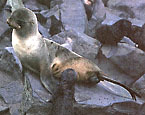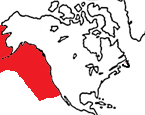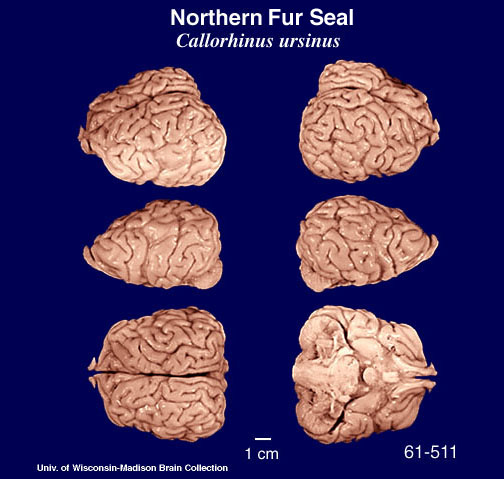|
Northern
Fur Seal
(Callorhinus ursinus) #61-511 |
||||
|
|
Physical
characteristics and distribution
|
|
This
is the single species of the genus Callorhinus. Size
and weights of this species are remarkably different depending
on sex. Fully mature males have a head and body length of 213
cm and weights from 181-272 kg. Mature females are about 142
cm long and weigh between 42-50 kg. Coloration of adult males
is dark gray to brown above, grayish shoulders and foreneck
and a short mane. The underparts and flippers are reddish brown.
Adult females and immature males are grayish brown above, reddish
brown underparts and a pale area on the chest. There is a heavy
underfur in both sexes and the pelage stops at an abrupt line
at the wrist on the flippers. Because of their thick underfur, C. ursinus' pelt is one of the most valuable of any pinniped. Because of this, the Pribilof Island population was over hunted. Harvesting restrictions were implemented from 1835 to 1867, allowing only immature males to be taken. After the purchase of Alaska by the United States, the restrictions were lifted and the population suffered greatly. The species is still in crisis today. They
are found in the North Pacific coastal regions in Canada, China
(vagrant to Shangdong), Japan, Mexico (coasts of Baja California),
Russia (Okhotsk and Bering Seas, Commander and Pribilof Isls),
USA (Alaska, Washington, Oregon, S California). |
|
Description
of the brain
|
|
Animal
source and preparation
|
|
All
specimens collected followed the same preparation
and histological procedure.
|
List of Specimens | Explore Collections | Brain Sections | Brain Evolution | Brain Development | Brain Circuitry | Brain Functions | Location and Use | Related Web Sites | Contact Us | Search MSU Database | Personnel | Home



